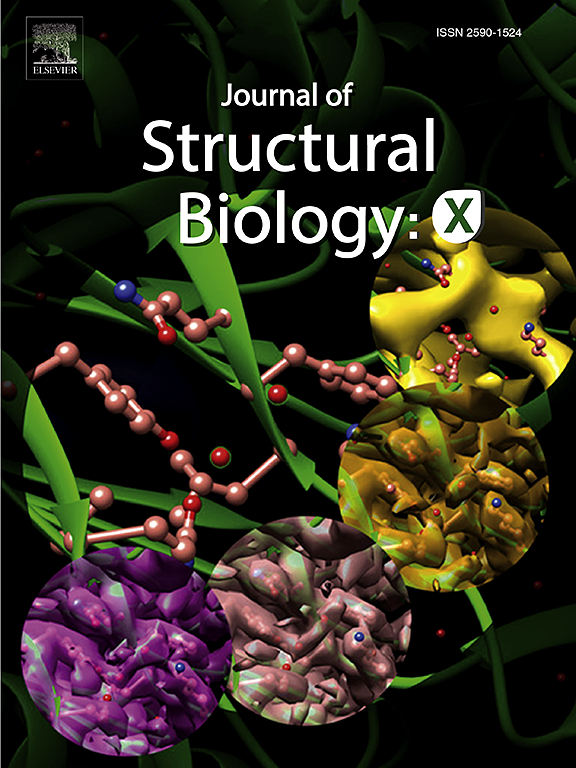Kinetic and structural studies of gamma-carbonic anhydrase from the oral pathogen Porphyromonas gingivalis
IF 2.7
3区 生物学
Q3 BIOCHEMISTRY & MOLECULAR BIOLOGY
引用次数: 0
Abstract
Porphyromonas gingivalis, a key pathogen in periodontal, plays a critical role in systemic pathologiesdiseases by evading host defence mechanisms and invading periodontal tissues. Targeting its virulence mechanisms and overcoming drug resistance are essential steps toward effective therapeutic development. In this study, we focused on the Carbonic Anhydrase (CA, EC: 4.2.1.1) encoded by P. gingivalis as a potential drug target.
We determined the crystal structure of PgiCA γ at a resolution of 2.4 Å and conducted kinetic characterization. The structure revealed that active PgiCA γ forms a trimer, with each monomer comprising a left-handed β-helix capped by a C-terminal α-helix and coordinated to a catalytic zinc ion through three histidine residues. Interestingly, one monomer displayed an atypical α-helix conformation, likely due to close interactions with neighbouring trimers within the crystal lattice (a probable crystallographic artefact).
These findings provide new insights into the structural and functional properties of PgiCA γ, emphasizing its potential as a target for the development of novel anti-virulence therapies against P. gingivalis.

口腔病原菌牙龈卟啉单胞菌γ -碳酸酐酶的动力学和结构研究。
牙龈卟啉单胞菌(Porphyromonas gingivalis)是牙周病的重要病原菌,通过逃避宿主防御机制侵入牙周组织,在牙周病的全身性病理过程中起着重要作用。针对其毒力机制和克服耐药性是有效治疗发展的必要步骤。在本研究中,我们重点研究了牙龈卟啉卟啉编码的碳酸酐酶(CA, EC: 4.2.1.1)作为潜在的药物靶点。我们以2.4 Å的分辨率确定了PgiCA γ的晶体结构,并进行了动力学表征。结构表明,活性PgiCA γ形成一个三聚体,每个单体由一个c端α-螺旋覆盖的左旋β-螺旋组成,并通过三个组氨酸残基与催化锌离子配位。有趣的是,其中一个单体表现出非典型的α-螺旋构象,可能是由于与晶格内邻近的三聚体密切相互作用(可能是晶体学人工产物)。这些发现为PgiCA γ的结构和功能特性提供了新的见解,强调了其作为开发针对牙龈卟啉菌的新型抗毒治疗靶点的潜力。
本文章由计算机程序翻译,如有差异,请以英文原文为准。
求助全文
约1分钟内获得全文
求助全文
来源期刊

Journal of structural biology
生物-生化与分子生物学
CiteScore
6.30
自引率
3.30%
发文量
88
审稿时长
65 days
期刊介绍:
Journal of Structural Biology (JSB) has an open access mirror journal, the Journal of Structural Biology: X (JSBX), sharing the same aims and scope, editorial team, submission system and rigorous peer review. Since both journals share the same editorial system, you may submit your manuscript via either journal homepage. You will be prompted during submission (and revision) to choose in which to publish your article. The editors and reviewers are not aware of the choice you made until the article has been published online. JSB and JSBX publish papers dealing with the structural analysis of living material at every level of organization by all methods that lead to an understanding of biological function in terms of molecular and supermolecular structure.
Techniques covered include:
• Light microscopy including confocal microscopy
• All types of electron microscopy
• X-ray diffraction
• Nuclear magnetic resonance
• Scanning force microscopy, scanning probe microscopy, and tunneling microscopy
• Digital image processing
• Computational insights into structure
 求助内容:
求助内容: 应助结果提醒方式:
应助结果提醒方式:


